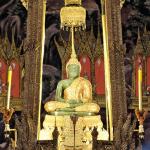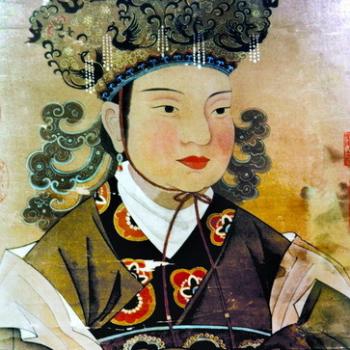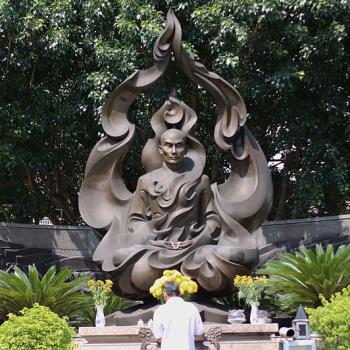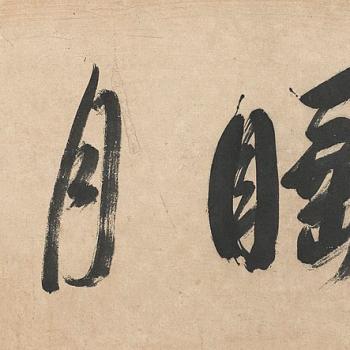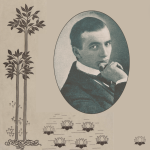The King and I, the classic musical by Richard Rogers and Oscar Hammerstein, premiered on Broadway in March 1951. It was a sensation and one of Rogers’s and Hammerstein’s most successful collaborations. The original cast included Yul Brynner as King Mongkut of Siam and Gertrude Lawrence as Anna Leonowens, the widowed British governess who was hired to be a teacher to the King’s several children. Since then the musical has been revived on Broadway four times, most recently in 2015.
You may have seen the 1956 film of the musical, starring Yul Brynner as the King and Deborah Kerr as Anna. It won five Oscars, including a Best Actor for Brynner. An animated version of the musical was released in 1999. And there was a non-musical film made of the same story, titled Anna and the King of Siam, that was produced by Darryl F. Zanuck and released in 1946 by Twentieth Century Fox. That one starred Rex Harrison as the King and Irene Dunn as Anna. The non-musical film got a couple of Oscars also. And another non-musical film titled Anna and the King was released in 1999, starring Chow Yun-Fat as the King and Jodie Foster as Anna.
All of these versions of the story were based on a best-selling novel by Margaret Landon, Anna and the King of Siam, published in 1944. The novel was based on two memoirs by the real Anna Leonowens. But while Leonowens’s memoirs are allowed in Thailand — the nation formerly known as Siam — the novel, musical, and the film versions of the story are banned there. Read on to learn why.
The Real King Mongkut of Siam
King Mongkut (1804–1868), is remembered in Thailand as one of the nation’s greatest statesmen. Before becoming king at the age of 47, Mongkut lived nearly 30 years as a Buddhist monk with the name Vajirañāṇo Bhikkhu. He became a recognized scholar of Buddhism and the abbot of a temple in Bangkok. Vajirañāṇo Bhikkhu made his temple a center of learning, including learning of science and western languages. He initiated dialogues and friendly relationships with Christian missionaries. In time he developed a reformed order of Buddhist monasticism, called the Dhammayuttika Nikaya or Thammayut order. Among other things, the new order required more rigorous application of the Buddha’s monastic code as well as better education for teachers. The order still thrives and has spread beyond Thailand.
The Buddhist monk became king in 1851 at the death of his elder brother. At the time, all of southeast Asia was under threat from European powers looking to establish new colonies. Indonesia already had become part of the Dutch Empire. Before the 19th century was over, Burma (Myanmar) and Malaysia would be British colonies, and Vietnam, Laos, and Cambodia became French Indochina. Only Siam remained independent.
Much of the credit for this goes to Mongkut and his chief minister, Somdet Chao Phraya Si Suriyawong. Mongkut shrewdly navigated international law and balanced the interests of Britain and France against each other. He corresponded with western heads of state to gain recognition as a co-equal political leader. At the same time, Mongkut was working to modernize Siam. He opened his country to trade and to education in western science and languages. After Mongkut’s death in 1868, minister Suriyawong served as regent for several years and continued Mongkut’s policies.
The Fictional King Mongkut
Comparing the real Mongkut to the film versions, one sees, um, discrepancies. The King of Siam was Yul Brynner’s signature role, but he played Mongkut as boorish, moody, vain, hot tempered, and ignorant about the world outside of Thailand. Brynner’s Mongkut was not a man who had ever lived as a Buddhist monk. And critics say that Brynner’s portrayal of Mongkut is downright sympathetic compared to Rex Harrison’s in the 1946 film (which I have not seen). The conceit of the story line is that the more enlightened Anna opened the king’s mind to new (i.e., western) ways of thinking and made him a better man and monarch. In Thailand, this conceit is considered an insult, both to the King and to Thai culture and history.
The Real Anna Leonowens
This much is, probably, true: Anna Leonowens (1831-1915; née Edwards) was a widowed British subject who was hired by the King of Siam in 1862 to teach English to his (estimated) 82 children and 32 wives and concubines. She remained in Siam for five years, living in the royal household with her young son, Louis. However, much of the rest of Anna’s story is exaggeration or just plain fiction.
Anna was born in India to British expats, and at the time she became a governess in Siam she had never been to Britain but had lived her entire life in various parts of Asia and Australia. At least one of her grandmothers is believed to have been at least partly if not entirely Indian. Anna’s husband, originally Thomas Leon Owens, for some reason took to using the last name Leonowens. Leonowens was not a British officer but had served in the British army in India as a clerk. At the time of his death from a stroke in 1859 he was a civilian managing a hotel in Malaysia.
After Thomas Leonowens’s death, Anna moved to Singapore to open a school for the children of British officers. She also began to present herself as a Welsh-born lady who had lost her fortune and the widow of a British officer. Her skills as a teacher were impressive enough that they secured her position in the court of Siam. She was hired as an English teacher, not a governess, with the condition that she make no attempt to convert anyone to Christianity. For a time she also worked as a “language secretary” for the King. I assume this meant dealing with English correspondence.
And What Really Happened Next
Anna was away from Siam at the time King Mongkut died of malaria. She had wanted to renegotiate the terms of her employment, but Mongkut’s death left her unemployed instead. For some time she corresponded amicably with Mongkut’s heir, King Chulalongkorn, but he did not ask her to return. To support herself she began writing “memoirs.” The first was The English Governess at the Siamese Court (1870) followed by The Romance of the Harem (1873). The books were successful enough that she became a respected author. She spent most of her life after Siam in Canada and the U.S. She is buried in Montreal.
However, Anna Leonowens’s books appear to have been written to sell copies rather than accurately present her life in Siam. She portrayed Mongkut as cruel and tyrannical, when by all other accounts he was a fair and kind man. (And I realize that a monarch with 32 wives and concubines is not going to meet 21st century standards of respect for women. But the books accuse Mongkut of torturing or executing wives, and historians dispute that.) She is believed to have wildly exaggerated her relationship with and influence over the King and her role in the court. And the Harem book consists mostly of unsubstantiated palace gossip.
One other postscript: In some of the film versions of the story young Louis died in Siam in a riding accident. In fact, Louis Leonowens (1856–1919) left Siam with his mother in 1867 but returned to Siam at the age of 25. His childhood friend King Chulalongkorn made Louis a captain in his royal cavalry. He later founded a trading company in Siam that is still in business. Louis left Siam in 1913 and died in the global flu epidemic in 1919. He is buried in London.
The Legacy of Anna and the King of Siam
Historians today say that educated Siamese people were already acquainted with western culture and languages before Anna Leonowens came to teach English. In Mongkut’s time it was already a long-established practice among nobles to hire the many Christian missionaries traipsing around Siam to teach English and other western languages to their children. The Siamese were not as naïve about the rest of the world as they are portrayed in the books and films.
And in reference to the famous “Shall We Dance” scene in The King and I: As charming as the scene is, King Mongkut would never, ever have danced a polka with anybody, including Anna.




